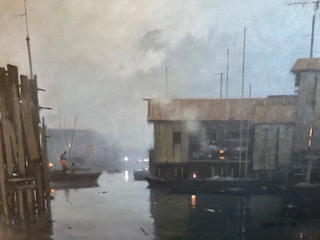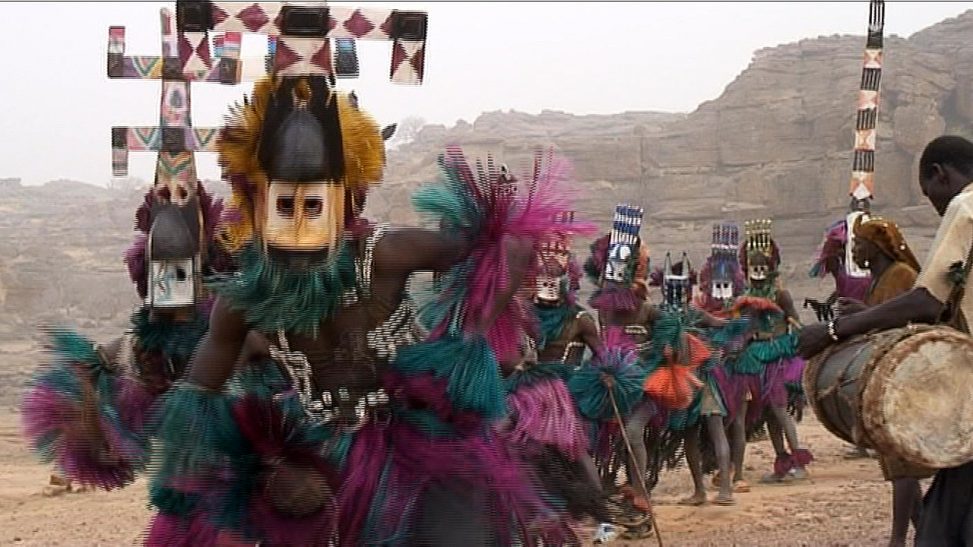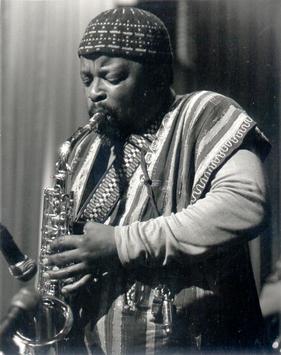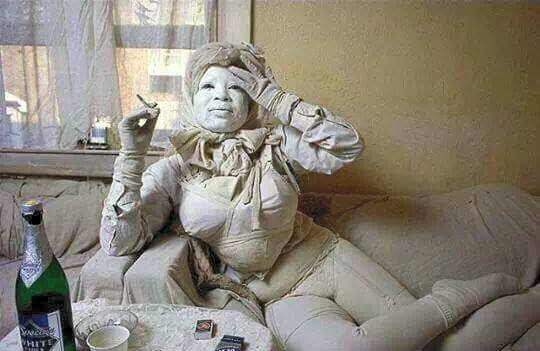African Art in Glasgow is happening! At Hidden Lane Gallery there will be a show of contemporary African Art, opening on Friday the 10th of January, 2020 running until March. Titled: ‘Expression, Contemporary African Art in Perspective’ – the show consists of an eclectic mix of colourful work, figurative and non-figurative, sculpture and photography. Curated by Lois and Carol, with input from Joe Mulholland and Josephine Macleod. For us to appreciate the cultural significance of this event let’s take note of :-
The context
During the last century, big names of the Western Art World became inspired by African Art in their search for more valid means of expression. Rapid industrialisation occurred across Europe during the 18th, 19th and the first half of the 20th Century. This had the effect of making people feel displaced and alienated. The remedy (so artists would have it) was to be found in more authentic modes of existence – amongst ‘less civilised’ communities. In 1912 Franz Marc wrote: “our ideas and ideals must be clad in hair-shirts, they must be fed on locusts and wild honey, not on history, if we are ever to escape the exhaustion of our European bad taste”.

Colonialism and the slave trade
At what price do we escape the exhaustion of European bad taste? What were the consequences for peoples and societies from which inspiration was being drawn?
Colonialism and the slave trade brought African imagery into Europe and beyond. We can appreciate through music how African rhythms, melodies and (musical) figures of speech found their way to the Americas through the transatlantic slave trade. Jazz, Rock and Roll, Soul, Hip-Hop, Reggae all evolved from there, ricocheting back to ‘the Old World’.
European assimilation of African Art
Rather than seeing the assimilation of African artistry as cultural appropriation, it is more positive to think about it as a hybrid development.
However, critical awareness is necessary when we consider the way in which ‘the stars’ often reap more than their fair share of glory by making African modes of expression popular. Dudu Pukwana was playing in London well before Paul Simon published ‘Graceland’. Both aspects of musical output share South African heritage, yet we all know the latter more than the former.
Likewise, the stars of the Art World laid claim to Africa’s imagery, making it apparent in our everyday lives. Picasso, Matisse, Braque, Derain, Kirchner, Modigliani et al – all owe a debt to the artistic fabric of ‘the dark continent’. Picasso first saw a figurine made by the Vili people of the Congo, (owned by Matisse) in 1906. Much of the form in the Demoiselles D’ Avignon is developed from Bakota sculpture and masks of the Dan people from the Ivory Coast.
‘Picasso stole the work of African artists’
Contrary to the legendary status accorded him, Picasso can also be seen as a ruthless egotist scrambling for success. His ‘urge’ to paint Les Demoiselles is as much to do with blowing Matisse out of the water and asserting his own ‘genius’ as anything else. Did he care about the African sources he used?

The faces in Les Demoiselles d’ Avignon each bear a similar expression. Picasso’s whores have empty, mawkish eyes – a regular characteristic of his portraiture, as if it were his own vacant consciousness beseeching us to regard him. The soul-less gaze of these women has more to do with demanding the viewer’s attention, than invoking and respecting the magical power of African Art upon which they are based – or portraying the psyches of sex workers. Picasso fans would argue otherwise but it is alleged he once said: “African Art? Never heard of it!‘”
The Art Market
A colleague of mine opined: ‘the Fine Art World (in the West), is the icing on the cake of Capitalism’. Whether you accept this or not, it is important to question why it might be so. Participation in the Fine Art market tends to be the preserve of wealthy elites, whose appreciation of Art is facilitated by financial muscle.
Artists have always courted the patronage and matronage of Art connoisseurs. Artists want to be paid well – but like diamonds, there are too many Artists. It’s an issue of supply and demand. So ‘the system’ requires only a few ‘make it’. Thus absurd monetary value can be placed on their output, preserving the status quo. Anyone can create meaningful or powerful marks but it’s the marketing process which transforms them into ‘Art’. Like jewellery in a shopping mall or water in a desert, if such things are in short supply – of course they will be valuable.
Contemporary developments in Afro-Caribbean Art
Across the pond, we can cite Jean Michel Basqiat as an example of Afro-American success in the Fine Arts. From a disturbed family background, this former graffiti artist in New York made it big, his works command hundreds of millions of dollars in price. Typically, he is no longer with us, dying from a heroin overdose in 1988. A life-span and style befitting the mythology of artistic prominence asserted by ‘the system’. He isn’t around to enjoy the benefits of his success, but the cognoscenti are.
Artistic achievement shouldn’t only be measured by/with money. A feature of the South London streets during the 1990s was ‘the White Lady of Camberwell‘. Unlike celebs who use costume or cross-dressing to gain attention, this Afro-Caribbean personality cut a startlingly subversive figure against the tumult of one of the UK’s poorest and most ethnically mixed boroughs. Art historians would probably categorize her under ‘Outsider Art’, because she didn’t do it for fame or profit – just to satisfy her own creative expression.
African Art in Glasgow
With the foregoing in mind, look to the rich variety and vitality of work on display at Hidden Lane Gallery to see African Art in Glasgow. Appreciate the heritage of African people, Africa and it’s Art – in a contemporary context. Be thankful for it and dare to invest beyond the pale.
Main image: Kanaga-dogon ancestor rites dance Mali (Wikipedia)



Josephine Macleod
Very good, insightful and informative article. Well done.
admin
Thanks Jospehine.